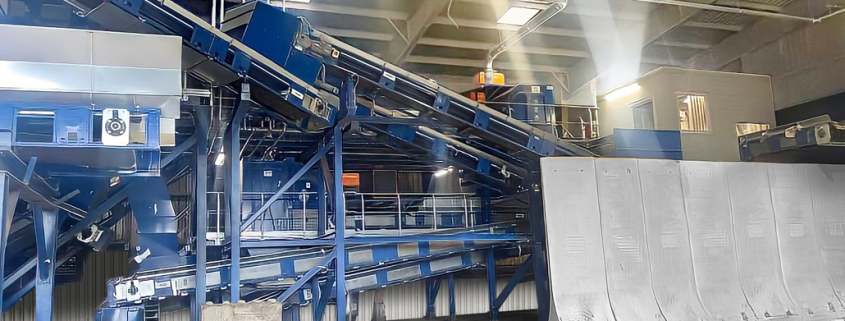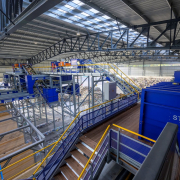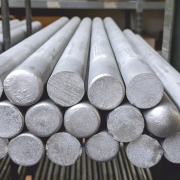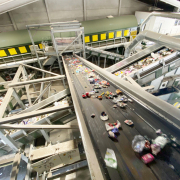Continuous Improvement Ensures Performance Capability
According to plant manufacturer Stadler, the firm has supported UK-based company J&B Recycling in achieving the best quality output material possible. The latest upgrade, completed in March 2022, has improved quality and increased capacity to anticipate the growing demand.
Stadler’s relationship with J&B Recycling began in 2008 when it designed and built its dry mixed recyclables plant in Hartlepool, United Kingdom. It has remained at their side ever since, supporting the company in a continuous improvement process of the plant. “Our focus is producing the best quality material possible,” Matt Tyrie, Operations Director at J&B Recycling, was quoted.
The composition and density of dry recyclable waste is in constant evolution. For this reason, sorting plants need to be able to process multiple materials flexibly while delivering the consistently high purity rates demanded by the recycling industry. The plants’ design also needs the flexibility of accommodating subsequent upgrades and modifications to meet the changing requirements. In 2017, the two companies worked together on a concept to remove paper and aluminum. To separate the paper, Stadler’s team added to the process an optical sorter (Tomra Autosort) on the flat fraction line to recover a high percentage of paper with fewer contaminants and a pass through a quality control cabin to ensure high purity. To remove aluminum, an Eddy Current Separator was installed to recover the non-ferrous material from the 2D flat fraction line.
Higher purity of the paper and increased capacity
Since then, six further upgrades have been carried out to optimize the plant and meet the evolving market demands. The latest upgrade aimed to achieve even higher purity of the paper and increase capacity, which has now been raised to 15 tons per hour. According to Matt Tyrie, the quality of the hard mix grade increased by adding a Laser Object Detection (LOD) system to the optical sorter, to remove more non-fiber contamination. “This technology allows each shift to run with reduced labor, and it has allowed the throughput to increase, as the quality of the hard mix was a bottleneck on the plant.”
A dosing drum feeds the material, which goes through a pre-sort platform for the manual removal of OCC (Old Corrugated Containers) and large film. A screening drum separates the remaining material into three fractions: Fines, Midsize and Oversize. The Oversize materials (above 170 millimeters), go through a Quality Control cabin and optical sorter to remove mixed paper, cardboard and plastics and produce a PAMS (Newspapers, Periodicals and Magazines) fraction. The Midsize fraction, below 170 millimeters, is separated into Fines, 2D and 3D fractions by the Stadler STT2000 ballistic separator. The 2D flat fraction is processed through Eddy Current Separators and Autosort optical sorter before a final Quality Control check to produce two streams, mixed paper fraction, and non-ferrous and ferrous fractions. The 3D rolling fractions follow a similar process, which begins with an Overband Magnet, to produce mixed plastic, HDP and PET fractions.
Fines are being processed to remove contaminants to create a glass product. All the output fractions, except for glass, are baled and sold.
(Published in GLOBAL RECYCLING Magazine 3/2022, Page 56, Photo: Stadler)








